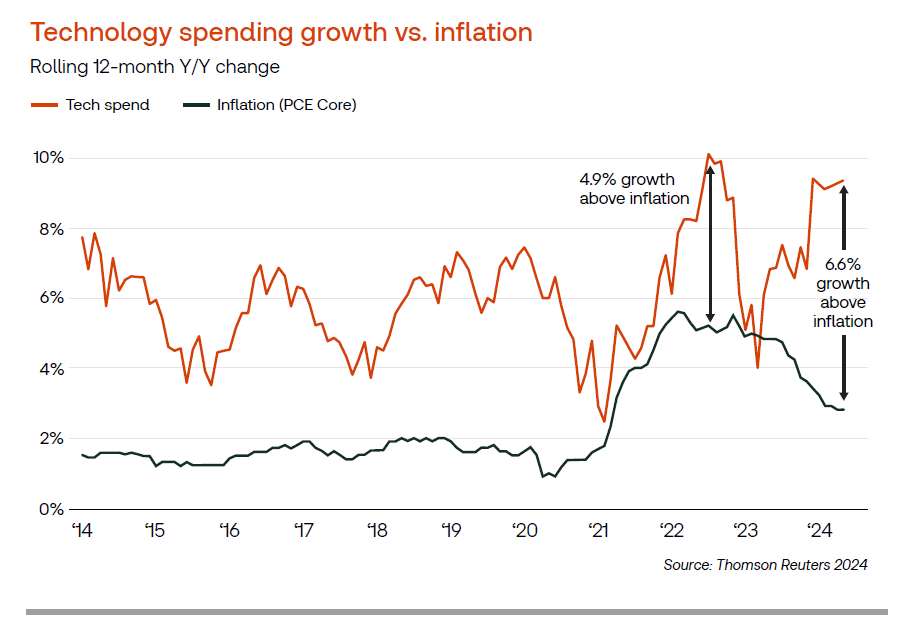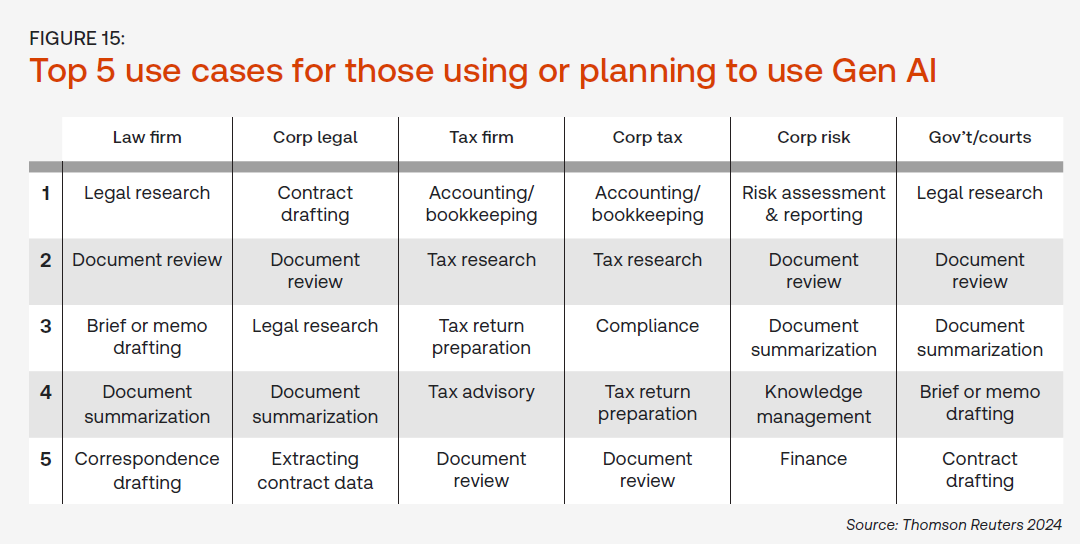Q1 2024 not only illustrated the current resilience of law firms, but it also revealed a new finding that might suggest the rise of an innovative trend around technology
The first quarter of 2024 was one that saw all the major metrics of the large law firm sector moving in the right direction as law firms’ finances enter a more stable landscape, according to a recent report.
Indeed, the first quarter’s favorable results pushed the Thomson Reuters Institute’s Law Firm Financial Index (LFFI) to a score of 59, an increase of 2 points from Q4 2023’s figure.
The report also showed that firms’ total billable hours grew 1.9%, with litigation leading the way. Fees worked went up 8.3%, compared to Q1 2023, indicating a robust performance not solely reliant on low baselines. While counter-cyclical practices continued to be the main source of growth, corporate work jumped into positive territory as well, setting up hopes of a resurgence in this group of practices in the coming months.
Worked rates rose 6.4% in Q1, compared to Q1 2023, keeping up with their strong growth pace that has been evident for some time now. As for productivity, the trend continued to be positive, and law firms experienced the lowest contraction in this metric in two years. Finally, revenue and profit rose while expenses further cooled, as all of these key metrics coalesced at around 5%.
Interestingly, one thing that surfaced in the most recent LFFI report was that tech spending growth by law firms was almost 4 percentage points higher than overall overhead expense growth. And, after adjusting for inflation, tech spending exhibited the fastest expansion in our data’s history.
Why are firms increasingly interested in expanding their tech investment?
Businesses across various industries are increasingly investing in technology due to its critical role in driving innovation and efficiency. The urgency to remain competitive and not be left behind has encouraged companies to adopt and leverage many new technologies, especially those powered by artificial intelligence (AI). Certainly, selected specialized industries are expected to lead in technology investments; but as we can observe from the graph below, the legal sector appears to be taking a proactive approach in its own pace to meet these evolving demands, too.

The graph shows the trend of tech spending in law firms as well as inflation over time. It is notable that firms’ tech spending growth rarely falls below 4%, nearly double the Federal Reserve’s 2% target for inflation. In recent years, the trend in tech spending has mimicked that of inflation: a sustained growth from 2021 until it reached its highest nominal growth rate around mid-2022. At this point, real growth stood at 4.9%, a likely reflection of firms’ investments after the wake of a greatly profitable 2021. (Real growth in this case refers to the growth adjusted for inflation. For these purposes, we use the PCE Core inflation measure — Personal Consumption Expenditures Excluding Food and Energy — both because it is the standard inflation measurement of the Federal Reserve and because we believe it is the most reliable indicator of the rate of inflation experienced by law firms.)
With the stabilization of inflation, we can observe a period in which tech spend growth started to slow down, at one point even briefly dipping below inflation. What is most interesting is that from then on and coinciding with generative AI (GenAI) sweeping the business and legal community, tech spending saw a strong revival, even when inflation had already begun to decelerate. In particular, Q1 2024 saw the fastest real growth in tech investment since at least 2014.
There are many factors that could be driving tech investment higher in law firms. One potential reason could be that firms are betting on GenAI tools to help them automate and speed up repetitive work. For example, the Thomson Reuters Institute’s 2024 GenAI in Professional Services report found that the top use cases for 327 surveyed law firms using or planning to use GenAI are, to some extent, routine tasks such as legal research, brief drafting, and document review and summarization.

Following in the findings from the report, law firms acknowledge that properly implementing and leveraging technology could indeed result in greater profitability. For example, one good practice would be to conduct a careful assessment to identify the areas of opportunity in which technology could be used to optimize the time of lawyers. By doing this, firms may find ways to reduce their costs either by decreasing their need for certain staff or by identifying greater efficiencies in the time required to complete a matter.
Subsequently, lawyers will then be able to allocate their time toward other impactful activities that could grow or add value to their production and thus, increase revenue — for example, by diving deeper into quality analysis, working on the development of effective communication, practicing their negotiation and social skills, or engaging more in client-facing activities. Such strategies could go hand-in-hand with the areas in which AI-enabled firms are able to gain market share from other law firms that may lag behind.
The time it takes for tech investments to fully materialize within a firm and boost efficiency may depend on different factors. And, although it isn’t trivial to measure real productivity gains from technology, robust studies have shown that the use of GenAI can make professionals work better and faster.
As a result, the question of whether some key metrics that are commonly used today to measure law firms’ productivity will continue to be useful measures as tech tools like GenAI gain ground, is still to be answered.
Even now, however, it is increasingly clear that GenAI use represents a possible solution to productivity challenges by detaching value from the time spent on tasks. Not surprisingly, this idea is evolving as the sentiment within law firms around tech investment has been glowingly positive. If these trends continue, law firms might be in for a revolutionary future ahead of them.







